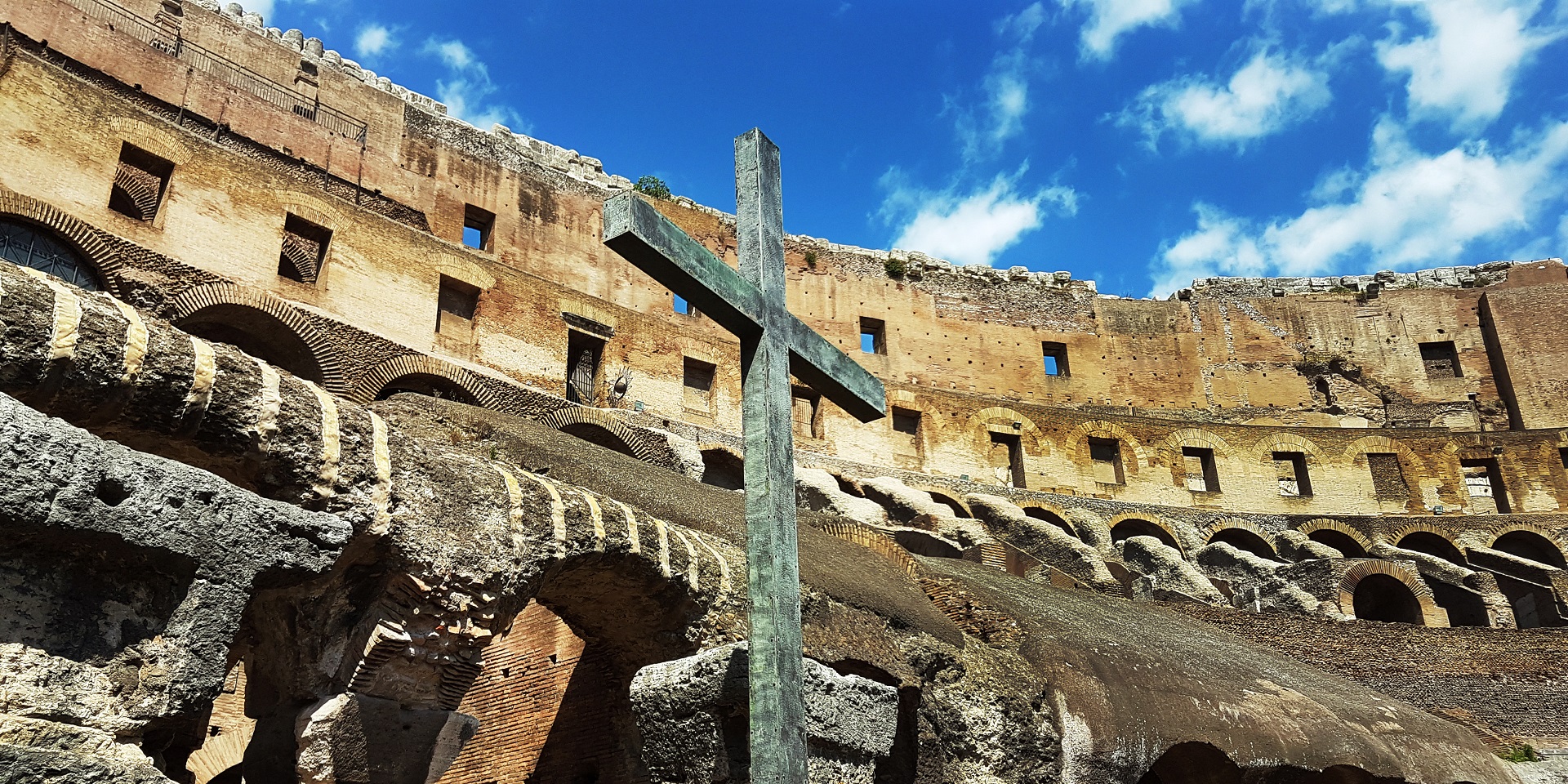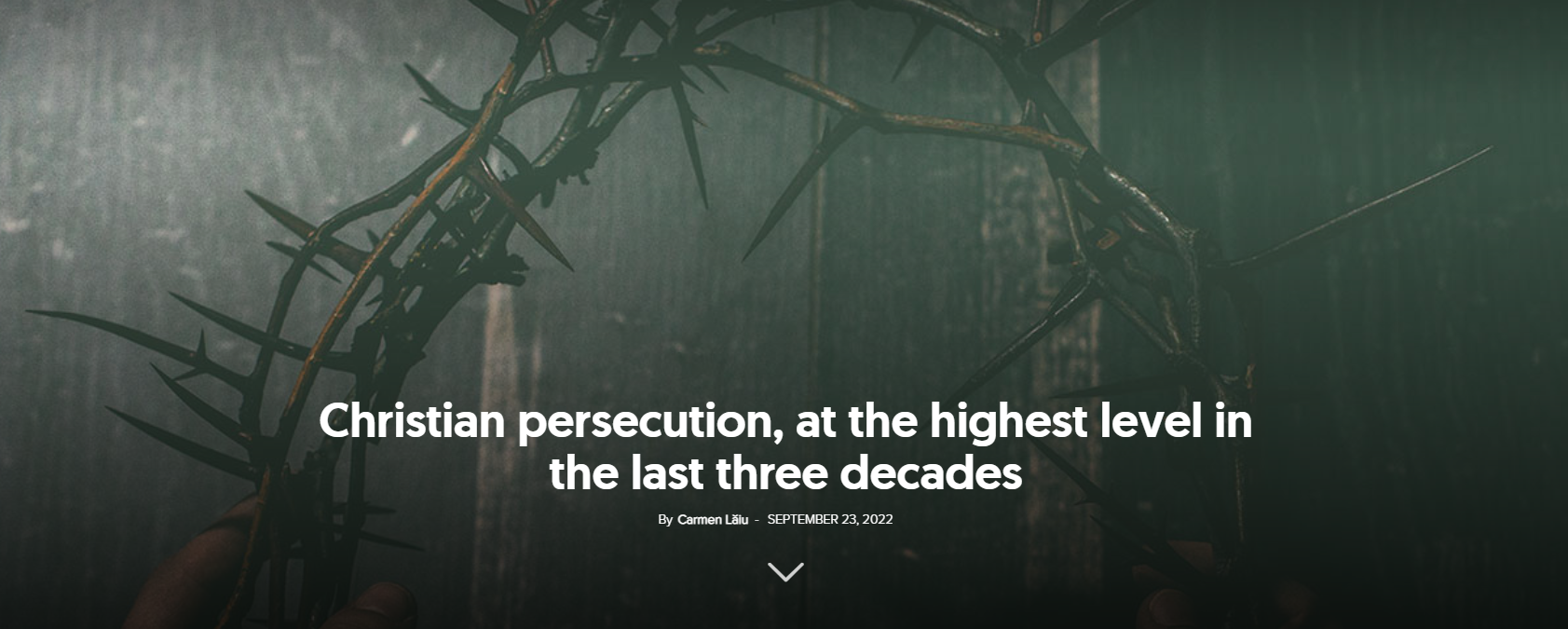A movement so alive and distinct from the imperial cults, as Christianity was, could not fail to attract the attention of temple servants, intellectuals, and officials.
Christianity challenged the superstitious spirit of the crowds, and the Caesars and their representatives interpreted the subject in a political sense, resulting in intense persecution of the believers. By God’s mercy, the persecutions also had several pauses. Usually, these persecutions were not general, but local and zonal. During this period, the Church in certain places had enough time to degenerate in some respects. The persecutions also had a purifying role (Daniel 11:35; 12:10) and, paradoxically, a missionary role. “The blood of Christians is seed,” the bishops of those times said. Below are listed only the most famous of the persecutions, in the order of the Caesars who caused them.
Nero (54-68)
Following the fire of 64, Nero—whose wife, Poppea, was a Jewish proselyte—identified Christians as the scapegoats. As a result, he sentenced the apostles Peter (64) and Paul (67) to death and filled the Colosseum with Christians who were either thrown to the lions or dressed in the skins of wild animals and torn apart by dogs. He turned them into living torches to light up his gardens, nailed them to crosses, tortured, and killed them in many ways to please the crowd. Nero died of an undignified suicide in 68.
Domitian (81-96)
Another Caesar who officially claimed to be “Lord and God” instituted the obligation to pay the old tax of the Jewish Temple in favour of the Temple of Jupiter. Thus, Jews, Judaizers, and Judeo-Christians came into conflict with the law. The monster was waiting for the senate to confirm his decree so that, in 30 days, all Jews and Christians in the empire would be killed. During this time, the apostle John was exiled to the island of Patmos (95), where he wrote the book of Revelation. Many other Christians were exiled, robbed of their wealth, and otherwise mistreated. Domitian was assassinated the following year.
Trajan Decius (249-251)
In 250, Decius launched the first great persecution against the leaders of the Church. The persecution was short, but fierce. The pagan priests were worried about Christian proselytism and argued that if this religion was not repressed in time, it would cause the fall of the state. The outbreak of a devastating plague was blamed on Christians. The emperor decided that the leaders would be killed and the laity would be pardoned only if they met the requirements of the imperial cult, burning incense or making sacrifices in front of Caesar’s statue. It was the harshest and most general persecution up to that time. Many bishops fled, which drew criticism from radical Christian factions.
In Carthage and Alexandria, the pagans launched real pogroms against Christians. Among those who did not manage to escape by running away, many apostatised, satisfying the demands of the authorities, following torture or out of fear of it. Some sacrificed to the gods, others burned incense. Those who could afford it, “bought” their libellus (“little book”, or certificate), which proved that they had obeyed the order, even though they had not burned incense. Others declared in writing that they were not Christians. Christians who avoided persecution by dishonest means or by apostasy were called lapsi (“fallen ones”). Meanwhile, the plague was wreaking havoc in Carthage. In Rome, it reached its peak (251-266) and claimed up to 5,000 victims a day.
Valerian (253-260)
He was initially tolerant, but was determined by Macrian, a sophist magician from Egypt, to resume measures to exterminate Christianity. The plague and persecution continued in parallel. By the edict of 257, Christians were punished with heavy fines and exile, but in 258 the death penalty was resumed (by flogging, fire, or sword). The clerics were ordered to be killed; the laity, also, to be executed if they did not leave the Christian “superstition.” Christians were even forbidden to visit their cemeteries. But Providence also reserved for Valerian a foretaste of future justice. He was taken hostage by the Persians and systematically humiliated, a heavy blow to Roman pride.
After the death of Valerian, for fifty years Christians experienced peace as never before. But it was the calm before the biggest storm.
The Great Persecution
The worst persecution, however, a real war of extermination of Christianity, took place over a period of ten years (303-313), during which nine emperors succeeded each other.
In the respite between the persecutions, the Church had strengthened greatly. Even at the imperial palace there were Christians who practised their faith freely. For a long time, Diocletian (284-305) was gentle with Christians, but in 296, following the Persian example, he launched a cruel persecution against the Manichaeans, a sect superficially related to Christianity. Diocletian’s decree condemned the Manichaean leaders to death by burning, along with their Scriptures. The decree made many martyrs in Egypt and in Roman Africa.
The spark of the new Christian persecution was ignited by the suspicions of Galerius (who later became Caesar between 305 and 311). The Roman army was full of Christian soldiers and even officers. As such, Galerius removed all Christians from the army in 298. He sought to convince Diocletian that they were plotting against the empire and began to persecute Christians in the East. A fire at Diocletian’s palace in Nicomedia, caused by Galerius, it is said, was blamed on the Christians, which convinced Diocletian to take urgent measures.
Four successive edicts were issued against Christians, starting in 303. Thus began the most extensive operation to exterminate Christianity in the empire, a terrible slaughter that lasted ten years. The two empresses who sympathised with Christians were exiled, and the Christians at the palace who did not deny their faith were cruelly executed. Doctors, craftsmen, virgins, as well as soldiers were martyred. Christians were crucified, burned, cut, ripped apart, and tortured in the most “refined” ways.
Hundreds of thousands of Christians perished during this time. Some of them are known by name and canonised as saints in the Eastern and Western calendars. Out of fear, many publicly renounced their faith under these circumstances. On his deathbed, struck by a serious illness, Galerius agreed to revoke the edicts of persecution, on the condition that all Christians be good citizens and pray to their God for the state and for the emperor.
Constantine and Licinius, emperors and brothers-in-law, subscribed in 312 to the revocation signed by Galerius, both issuing an edict of tolerance. Nevertheless, only in the year 313, following the Edict of Milan, did Christians receive full freedom of worship and full equality. From then on, Christianity had a legal basis for the free development of religious existence and life.
The last Roman persecutions
Julian the Apostate (361-363) was the last non-Christian Roman emperor, the last survivor of the Constantinian dynasty, who ascended the throne with the idea of ending the Christian “masquerade” of Constantine the Great. He took measures to revive the old Roman practices and to positively discriminate non-Christians (polytheists, Jews, etc.). The restoration of paganism was applauded by many who had previously embraced Christianity ostensibly or out of necessity.
Understanding that the blood of the martyrs is a seed, Julian did not persecute Christianity in a bloody manner, but tried to weaken its political power, among other things. He removed Christians from public positions and forbade them from engaging in Greco-Roman literature and philosophy, reminding them that “the wisdom of this world is foolishness” (1 Corinthians 3:19). He abolished all the privileges granted by Constantine to the Church; he stripped the churches of their unnatural ornaments, giving them to pagan temples, justifying himself with the biblical verse which implies that the rich will not enter the Kingdom of God. He greeted Christians wronged by the authorities or pagan mobs with the text: “Blessed are those who are persecuted” (Matthew 5:10).
He died in the war against the Persians, pierced by an arrow, which the pagans suspected had been fired by a Christian. His death put an end to any attempt at an official restoration of paganism and Judaism.
Final considerations
The persecutions of the first centuries highlight a particularly interesting philosophical, religious, political, and psychological issue—power corrupts. Polytheists, Christians, and Jews were, in turn or alternatively, persecuted and persecutors, depending on the era. All of them enriched their spiritual heritage with heroes and martyrs. Providence allowed Christianity a place in the empire and in the world, starting with Constantine the Great, to show that, if made a state religion, Christianity does not bring heaven to earth, but quite the opposite.
A millennium and a half of Christian rule that followed witnessed greater horrors, and unlike the follies of Nero, those of the Church were committed in the name of Christ. The moral that is imposed is obvious, both in the sense of political philosophy and in that of ecclesiastical law. In the midst of these abominations, however, the perseverance and sacrifice of the martyrs—who had learned to look at things above, more than at things below, as Jesus did—are the only moral indicators.
Florin Lăiu is a former Bible professor at the Theological Seminary of the Adventus University in Romania where he worked for 28 years, specialising in biblical languages, biblical exegesis, apocalyptic and biblical translation. Now retired, he is an Adventist apologetic, poetry and music enthusiast, author of articles and books, husband, father of four, and grandfather of six.




















